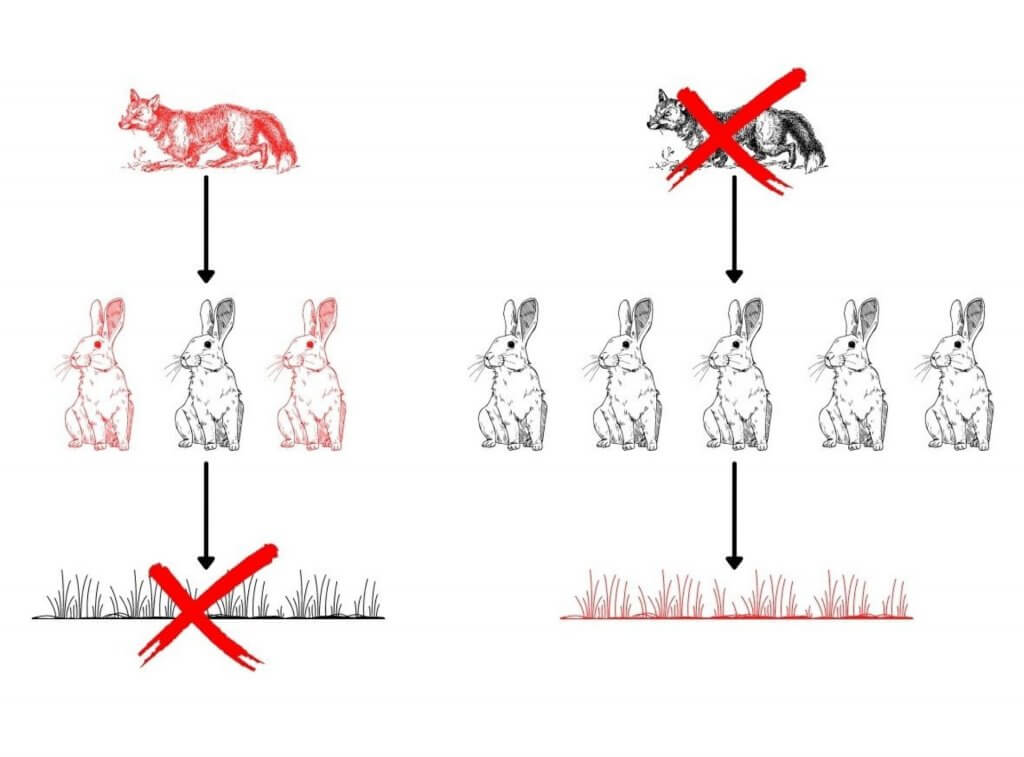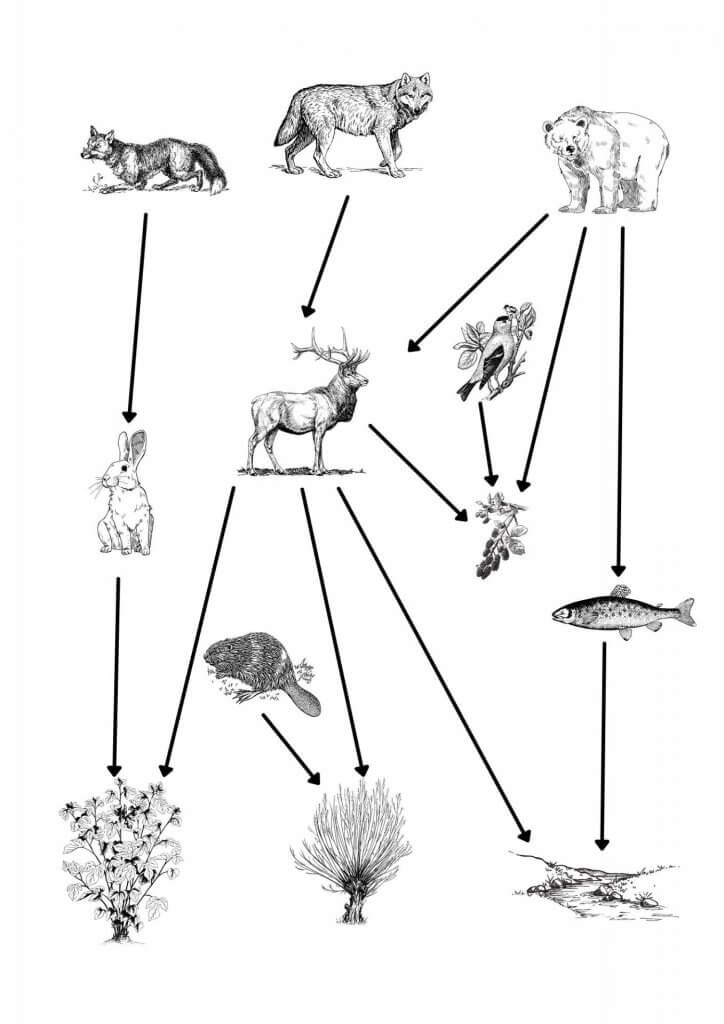Protecting Wildlife Keeps Ecosystems Healthy
03/02/2022
Defining wildlife and ecosystems and how they’re linked
The term, “Wildlife” refers to all life in the wild. It encompasses all living things, including mammals, fish, reptiles, and birds, collectively known as fauna, and sometimes includes plants or flora. These are the components of habitat and play an important role within them.
In contrast, ecosystems are more like a network that includes all wildlife and living parts of the system (biotic factors), but also non-living parts of the environment (abiotic factors), including weather and landscape. Everything in this network is interlinked and is interacting with one another. Ecosystems can be either very small, such as a singular tide pool, or very large, such as a forest. The world is made up of many interlinking ecosystems and, in a few cases, the world itself is referred to as a singular ecosystem.
Why is wildlife so important to its ecosystem?

So far, we’ve established that wildlife lives within an ecosystem, but why is it so important to the ecosystem, and why is there a push to protect individual species when whole ecosystems are threatened?
Imagine a simple food chain. In Picture 1, we have a fox as the predator, the rabbits as the prey, and the grass as the rabbits’ food source, also known as the primary producer. Each of these levels (more scientifically known as trophic levels) have a role to play in the chain. The grazing of the rabbits on the grass prevents too much vegetation growth, but the rabbit population is kept in check by the foxes who predate upon them.
Now, if we take one of these levels out, you end up with an interruption, which ripples through the rest of the food chain. For example, in Picture 2a, the grass has been removed. This could happen as a result of drought, or potentially habitat loss through human development. The result of this is that the rabbits do not have enough food and so many may die. This of course will pass on further up the chain and cause issues for the foxes since their food source is low, and it may result in the foxes dying.
Another example, in Picture 2b, is from the top-down, whereby the foxes may be removed or reduced from the chain. This is often seen in the wild when predators are hunted to near extinction or a fatal disease passes through the species. For this example, the rabbits have less predatory pressure and so their numbers increase dramatically. This may be good for the rabbits in the short-term, but if left to their own devices they could overgraze the area. Over time the grass would suffer since it would not be able to regenerate quick enough. Once the rabbits have overgrazed their food source, they then would not have enough food, would compete with one another, and many would be at risk of starvation.

The ecosystem network: Yellowstone National Park and the reintroduction of gray wolves
The food chain example is incredibly simple and does not consider the vast array of other wildlife and non-living parts of the ecosystem that could be affected by the loss of a single species like the fox. To truly understand how an ecosystem works, and why wildlife is so important to it, we need to expand further.
The most notorious case of how an entire ecosystem was altered by a singular species is the reintroduction of gray wolves into Yellowstone National Park. In the 1930s, the wolves in this world-renowned location were eliminated from the park through over-hunting, mostly due to the fear of them attacking people or killing livestock. Once wolves were gone, the elk, which had been important prey for the wolves, were able to thrive. With the elk under much less predatory pressure, their numbers increased dramatically and the changes in the ecosystem began.
In Picture 3, you can see a simple idea of what the Yellowstone National Park ecosystem looked like, with the elk at the center of the network. The elks’ increase in number caused a series of indirect consequences for the ecosystem (otherwise known as a trophic cascade) because they were over-grazing and over-browsing the land, including many of the berries that also fed the songbirds and grizzly bears. The elk’s browsing on young plant shoots prevented the growth of shrubs resulting in prey species, such as rabbits, having fewer areas to hide from their own predators. If you think back to the example of the food chain with the fox and rabbit, you should now understand how that would affect all the levels.
The elk were not afraid of staying for long periods at the riverbanks, where previously they could have been attacked by the wolves. They overgrazed young vegetation along the rivers, which weakened the banks and caused riverbank erosion, resulting in the rivers widening. The water also became warmer since the lack of trees and vegetation at the bank meant that there were fewer shaded areas cooling the water down. These changes to the river caused a biodiversity shift in the fish populations. Beavers were also suffering because willow trees on the riverbanks could not grow past shoots. Willows provide beavers with food as well as being the resource that beavers use to create their dams. Without larger willow trees, the beavers were unable to survive winters and so in Yellowstone the population reduced to just one beaver colony.
In 1995, wolves were reintroduced to Yellowstone National Park. As expected, the wolves started to predate on the elk, which kept the elk on the move and so reduced the pressure the elk were putting on riverbanks and other young plants. Suddenly, things began to change and there were berries for the birds and bears, and shrubs for the rabbits and other prey species. Riverbanks were stronger as they held more vegetation, this prevented bank erosion and created more shaded areas, which provided cooler water for fish. However, by far the most remarkable change was due to the growth of willows allowing beavers to use them to create dams to survive the winter. The beavers began to return to Yellowstone and the dams they built raised the water table, so water was available more consistently throughout the year to surrounding vegetation. Since 1995, beaver colonies have been increasing and their dams have changed the course of rivers in Yellowstone National Park.
The whole ecosystem has benefitted from the reintroduction of wolves to Yellowstone because the wolves are what is known as a keystone species, which is an important species, without which, can cause the collapse of their ecosystem. Without the wolves, the elk were not controlled, and the network was falling apart. Now with the wolves returned to the park, the course of the rivers has been altered.

Protecting wildlife at Nature and Culture International
At Nature and Culture International, we believe in protecting wildlife and ecosystems. We are currently working on multiple conservation projects to protect endangered species, such as the spectacled bear in Peru and the Jaguar in Bolivia. Like the gray wolf in Yellowstone, these species are important to their ecosystems so, who’s to say what the consequences of their loss to the habitat would be? You can check out more of our ongoing work.
All wildlife is vital to keep the scales of life balanced. The IUCN estimates approximately 40,000 species globally are threatened with extinction: including mammals, amphibians, sharks and rays, birds, and plants. Our global biodiversity is declining so we all need to come together to prevent our ecosystems from collapsing by protecting every last species.


